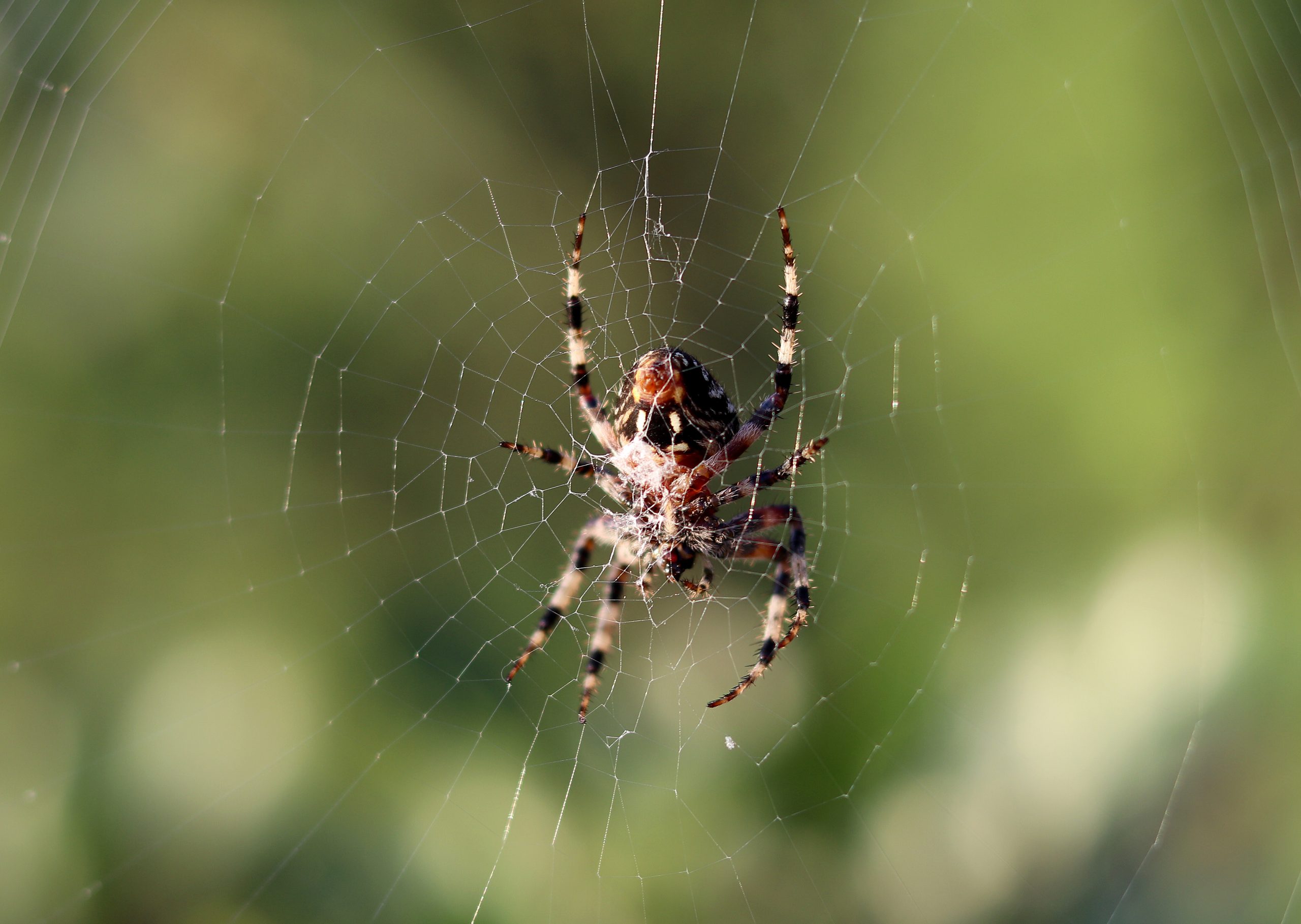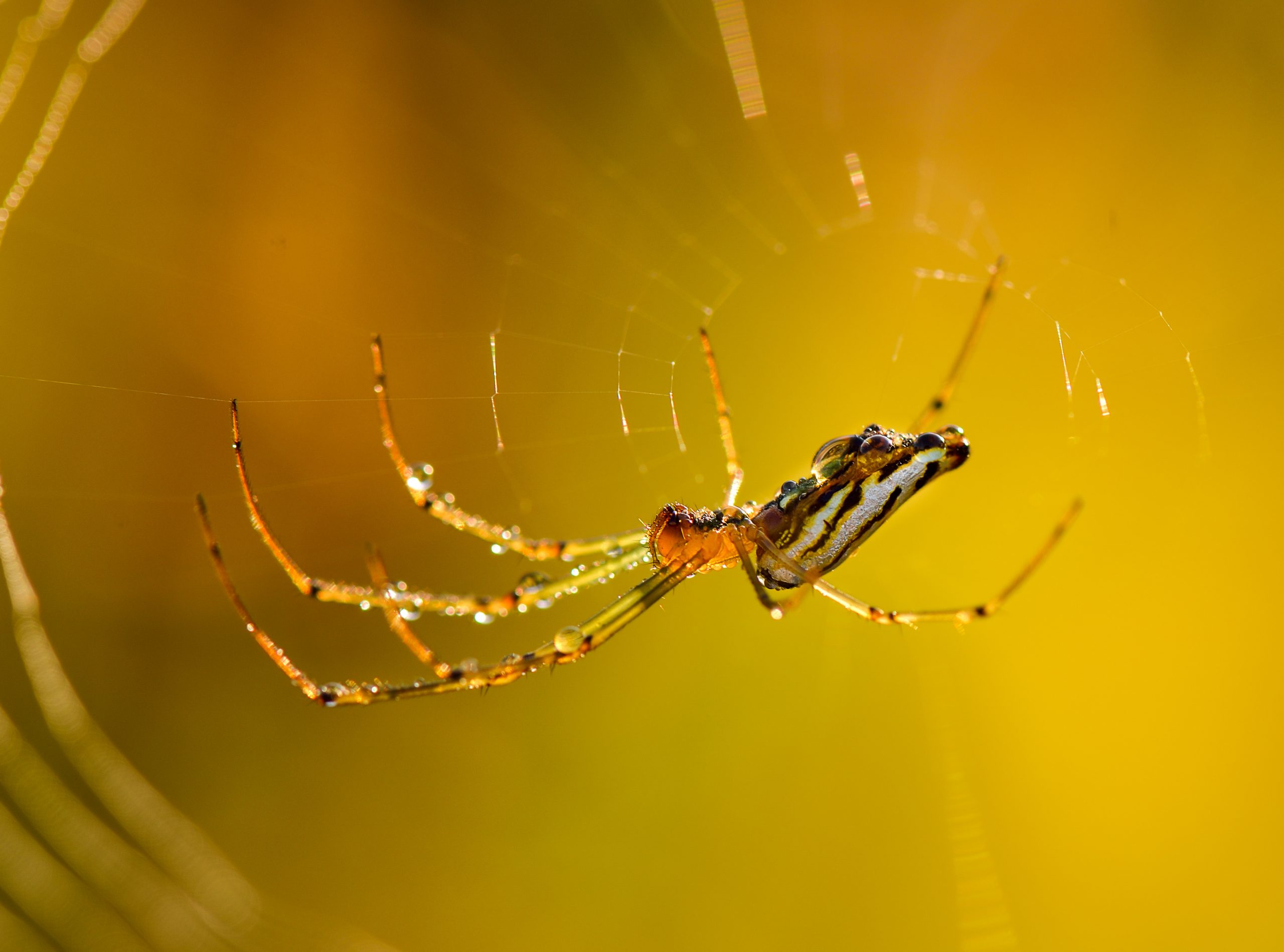Finding spiders in your home can be unsettling, especially when you’re unsure which species you’re dealing with or how they gained entry. At Nature’s Way, our professional spider pest control service addresses spider infestations with expertise and efficiency. Understanding spider behaviour, common UK species, and effective elimination methods helps us deliver comprehensive solutions that keep your home spider-free.
Common UK Spider Species and Identification
House Spiders (Tegenaria Species)
House spiders are among the most frequently encountered species in British homes. These large, brown spiders often measure 10-15mm in body length with leg spans reaching 70mm. They typically build funnel-shaped webs in corners, basements, and undisturbed areas where they wait for prey.
Our spider pest control service frequently addresses house spider infestations during autumn months when males venture indoors seeking mates. These spiders prefer dark, humid environments and often establish populations in areas with consistent moisture levels.
False Widow Spiders (Steatoda Species)
False widows have become increasingly common across the UK, particularly in southern regions. These glossy, dark brown spiders are often mistaken for their more dangerous relatives but pose minimal threat to humans. However, their bites can cause localised pain and swelling in sensitive individuals.
Professional pest control spiders services can quickly identify false widow populations and implement targeted treatments. These spiders prefer outdoor structures but frequently move indoors during cold weather, establishing webs in garages, sheds, and quiet indoor areas.
Cellar Spiders (Pholcus Phalangioides)
Cellar spiders, characterised by their extremely long, thin legs and small bodies, commonly inhabit basements, cellars, and bathrooms. These spiders create irregular webs in corners and vibrate rapidly when disturbed, earning them the nickname “daddy long-legs spiders.”
Our pest control for spiders includes addressing cellar spider populations that can quickly multiply in suitable environments. Whilst harmless to humans, large populations create unsightly webs throughout affected areas.
Garden Spiders Entering Homes
Various garden spider species occasionally venture indoors, particularly during adverse weather conditions. These include orb weavers, wolf spiders, and jumping spiders that typically prefer outdoor environments but seek shelter during storms or temperature extremes.
Why Spiders Enter Homes
Seeking Prey Insects
The primary reason spiders enter homes is abundant food sources in the form of other insects. Properties with existing pest problems often develop secondary spider infestations as spiders follow their prey indoors. Effective spider pest control addresses both spider populations and underlying insect issues that attract them.
Flying insects drawn to interior lighting, stored product pests in pantries, and moisture-loving insects in bathrooms all provide food sources that sustain spider populations. Our comprehensive approach identifies and eliminates these attractants alongside spider removal.
Weather and Seasonal Factors
Adverse weather conditions drive many spider species indoors seeking shelter. Heavy rains, cold snaps, and prolonged dry periods all trigger increased indoor spider activity. Autumn months typically see peak spider movement as males search for mates and individuals seek overwintering sites.
Our pest control spiders service experiences highest demand during these seasonal migration periods, requiring rapid response capabilities to address sudden population increases.
Suitable Nesting Environments
Homes provide ideal nesting environments with consistent temperatures, protection from predators, and numerous hiding places. Undisturbed areas like basements, attics, storage rooms, and behind furniture offer perfect conditions for spider establishment.
Structural features including wall cavities, roof spaces, and gaps around utilities provide additional harbourage opportunities that support large spider populations if left untreated.
Our Professional Spider Pest Control Process
Comprehensive Property Inspection
Our spider pest control service begins with thorough property inspection to identify spider species present, locate nesting areas, and assess factors contributing to infestations. This inspection covers both interior and exterior areas where spiders might establish populations.
We examine common spider harbourage sites including basements, attics, storage areas, and building perimeters. Web locations provide valuable information about spider species and population sizes, enabling targeted treatment approaches.
Our technicians also identify entry points where spiders gain access and assess moisture conditions, lighting factors, and other environmental elements that influence spider attraction to your property.
Species-Specific Treatment Methods
Different spider species require specific treatment approaches based on their biology and behaviour patterns. Our pest control for spiders employs targeted methods that maximise effectiveness whilst minimising environmental impact.
For web-building species, we focus on harbourage area treatments where spiders rest during daylight hours. Residual applications in these locations eliminate spiders when they return to hiding places whilst providing long-term protection against new arrivals.
Hunting spiders receive different treatment approaches targeting their movement patterns and preferred hunting grounds. These applications intercept spiders as they move through treated areas seeking prey.
Advanced Application Techniques
Our professional equipment enables precise application in difficult-to-reach areas where spiders typically hide. We use specialised formulations designed for crack and crevice treatment, ensuring products reach spider populations in wall voids and structural gaps.
Dust formulations applied in roof spaces and basement areas provide extended control in areas where conventional sprays prove ineffective. These products continue working for months, eliminating spiders that contact treated surfaces.
Web removal forms an important component of our spider pest control service, eliminating existing populations whilst removing egg sacs that might harbour developing spiders.
Entry Point Sealing and Exclusion
Identifying Spider Access Routes
Effective pest control for spiders requires addressing how these creatures enter your property. Our technicians conduct detailed exterior inspections identifying gaps, cracks, and openings that provide spider access routes.
Common entry points include gaps around windows and doors, cracks in foundation walls, openings around utility penetrations, and spaces where different building materials meet. Even tiny gaps can accommodate spider entry, requiring thorough sealing efforts.
We also examine landscaping features adjacent to buildings, as overgrown vegetation and debris piles provide staging areas where spiders congregate before entering structures.
Professional Sealing Methods
Our spider pest control service includes professional sealing of identified entry points using appropriate materials for each location. We employ weather-resistant sealants for exterior gaps, expanding foam for larger openings, and mesh barriers for vents and drainage areas.
Proper sealing requires understanding building materials and expansion characteristics to ensure long-lasting results. Our technicians select materials that maintain building integrity whilst effectively excluding spider access.
We also provide recommendations for ongoing maintenance that preserves exclusion effectiveness, including seasonal inspection schedules and material replacement guidelines.
Landscape Modification Recommendations
Strategic landscape modifications significantly reduce spider pressure on buildings. We provide guidance on vegetation management, debris removal, and lighting modifications that make properties less attractive to spider populations.
Maintaining clear zones around building perimeters, removing spider-friendly plants near structures, and addressing moisture sources all contribute to long-term spider control success.
Routine Prevention Strategies
Regular Inspection Programs
Proactive spider pest control includes regular inspection programs that identify developing problems before they become established infestations. Our technicians can schedule periodic property evaluations focusing on high-risk areas and seasonal migration periods.
These inspections enable early intervention when spider populations are small and easily controlled. Regular monitoring also identifies changes in property conditions that might attract new spider infestations.
Integrated Pest Management
Comprehensive pest control for spiders addresses multiple factors that contribute to spider attraction and establishment. This includes managing other insect populations that serve as spider food sources, addressing moisture problems, and maintaining structural integrity.
Our integrated approach reduces reliance on chemical treatments whilst achieving superior long-term results. Environmental modifications provide lasting protection that continues working between professional treatments.
Seasonal Treatment Schedules
Strategic timing of spider pest control treatments maximises effectiveness by coinciding with natural spider activity patterns. Spring treatments target emerging populations before breeding begins, whilst autumn applications address migration periods when spiders seek indoor shelter.
Our seasonal programs provide consistent protection throughout peak spider activity periods, preventing establishment of large populations that become increasingly difficult to control.
Fast Response Times and Emergency Service
Same-Day Service Availability
Understanding that spider infestations can cause significant distress, particularly for individuals with arachnophobia, our spider pest control service offers same-day response throughout Essex. Emergency appointments accommodate urgent situations where immediate intervention is necessary.
Our mobile service units carry comprehensive treatment materials enabling complete spider elimination during initial visits. This rapid response capability prevents small problems from developing into major infestations.
Priority Scheduling for Vulnerable Clients
We provide priority scheduling for elderly clients, families with young children, and individuals with spider phobias who require immediate assistance. Our understanding and professional approach ensures comfortable experiences even for highly anxious clients.
24/7 Emergency Contact
Serious spider infestations or discoveries of potentially dangerous species receive immediate attention through our emergency contact system. Our experienced staff can provide immediate guidance whilst arranging urgent professional intervention.
Why Professional Spider Pest Control Delivers Better Results
Comprehensive Species Knowledge
Our technicians’ extensive knowledge of UK spider species enables accurate identification and appropriate treatment selection. This expertise ensures effective elimination whilst avoiding unnecessary treatments for harmless species.
Professional-Grade Products
Commercial treatments available to pest control professionals provide superior effectiveness and longer residual protection compared to consumer products. Our access to restricted-use materials enables complete elimination of established spider populations.
Ongoing Support and Monitoring
Professional spider pest control includes ongoing support with follow-up treatments, prevention advice, and monitoring services that maintain long-term success. Our commitment extends beyond initial elimination to comprehensive long-term protection.
Don’t let spider infestations compromise your comfort and peace of mind. Contact Nature’s Way today for professional spider pest control that eliminates current populations whilst preventing future problems. Our fast response times and comprehensive approach ensure effective spider control when you need it most.




